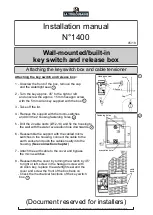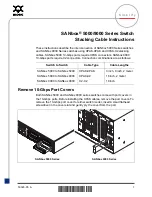
PureLink by Dtrovision
19
Table 2.1 Command Codes Characters Table
The table below shows command code characters (keys), which are used to generate control commands,
their functions, and short function descriptions.
Key
Function
Description and Example
Byte
HEX
ASCII
0x2A
*
Start the command
Header Code
1
0x21
!
End the command
Tail Code
1
Execute the command
Execute the command
0x43
0x63
C
C
Connect
Initiates a Connect (switch) command for Video;
this must precede input and output specification
1
0x3F
?
Status
Status command; this must precede input and
output specification
1
0x44
0x64
D
D
Disconnect
Disconnect command for both Video and Audio;
this must precede input and output specification
1
,
Space
Separates the numbers within entries that
contain multiple numbers
1
-
Range
Specifies a range of numbers in entries
containing multiple numbers
1
?version
Firmware version check
Firmware version check command;
*255?version!
2.5 Command Ack (Acknowledge) Value Response
When command codes are entered into a terminal emulation program (such as HyperTerminal) and are
accepted by the system, they respond back to the terminal screen one at a time, as noted below in the
table. The complete comma
nd has executed successfully when all of the entered characters including “s”
which stands for status, appear. If a command character is not accepted, a different character than the one
entered appears and all or part of the command has not been executed.
Ack (Acknowledge) Value Response Table
The following table shows ack value response characters along with their descriptions and meanings,
which may appear instead of the initially entered character or number. If these characters appear, all or part
of the command has not been executed.
Table 3.2 Descriptions of Acknowledge (ACK) Signals
Ack value
Description
Input 1 is not connected
No information in each channel.
Command Code Error
Indicates that system has rejected all or part of the command






































